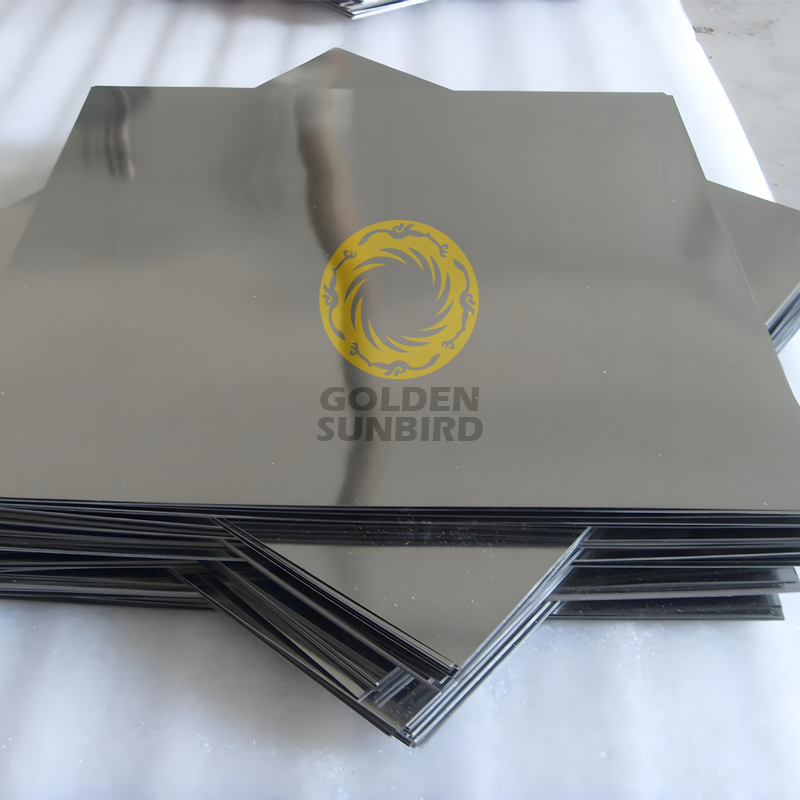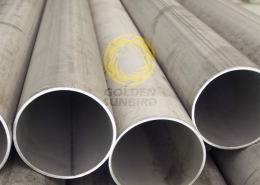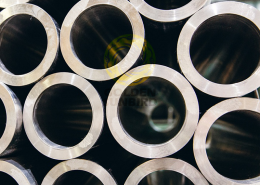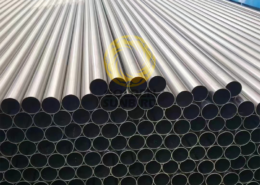ASTM B760 Tungsten Plate, Sheet and Foil
- Pure Tungsten
- Shape types: Plate, Sheet, Foil
- Width: 25 – 610mm
- Thickness: 0.13-15.9mm
- Tungsten melting point: 3,422°C (6,191.6°F)
- Tungsten density: 19.28 g/cm³
Features
ASTM B760 Tungsten Plate, Sheet, and Foil
Chemical Composition of Tungsten Plate, Sheet, and Foil (wt.%)
| Element | Maximum Composition (%) | Permissible Variations in Check Analysis (%) |
| C | 0.01 | ±0.002 |
| O | 0.01 | +10 % relative |
| N | 0.01 | ±0.0005 |
| Fe | 0.01 | ±0.001 |
| Ni | 0.01 | ±0.001 |
| Si | 0.01 | ±0.001 |
Note: If chemical analysis is performed on a sample from the powder blend used to make the finished product, oxygen will be reported for information only.
Permissible Thickness Variations for Tungsten Plate, Sheet, and Foil
Specified Width and Thickness Tolerances
| Specified Width (in.) | Specified Thickness (in.) | Thickness Tolerance (in.) |
| 12 (305 mm) and under | 0.005 to 0.010 (0.13 to 0.25) | ±0.001 (±0.0254 mm) |
| 12 (305 mm) and under | over 0.010 to 0.020 (0.25 to 0.51) | ±0.002 (±0.0508 mm) |
| 12 (305 mm) and under | over 0.020 (0.51) | ±10% |
| Over 12 to 24 (305 to 610 mm) | over 0.010 to 0.025 (0.25 to 0.64) | ±0.0025 (±0.0635 mm) |
| Over 12 to 24 (305 to 610 mm) | over 0.025 (0.64) | ±10% |
Tolerances for foil shall be as agreed upon between the producer and the purchaser
Flatness Deviation
| Thickness Range (in.) | Flatness Deviation (max %) |
| 0.005–0.187 (0.13–4.75 mm) | 4 |
| 0.188–0.625 (4.75–15.9 mm) | 5 |
Flatness deviation is calculated as \text{Flatness Deviation %} = \frac{H}{L} \times 100 where H is the maximum vertical distance between a flat reference surface and the lower surface of the flat product, and L is the minimum horizontal distance between the highest point of the flat product where H is determined and the point of contact of the lower surface of the flat product with a flat reference surface.
Technical Specifications
| Specification | Value |
| Standard | ASTM B760 Tungsten Plate, Sheet and Foil |
| Type | Plate, Sheet, Foil |
| Finish | Smooth, clean finish |
| Dimension | Width: 25 – 610mm x Thickness: 0.13-15.9mm |
| Foil | less than 0.005 in. (0.13mm) in thickness. |
| Plate | 0.188 in. (4.75mm) or more in thickness. |
| Sheet | from .005 in. (0.13mm) to 0.187 in. (4.75mm) in thickness. |
| Manufacturing Process | Plate and Sheet: hot-rolled, hot-rolled, stress-relieved |
| Foil: cold-rolled, cold-rolled, stress-relieved | |
| Inspection Certificate | EN 10204 Type 3.1 (Mill Test Certificate), EN 10204 Type 3.2 (Witness Testing or 3rd Party Inspection) |
| Tests | Chemical analysis, Tensile test, Hardness test |
Packing
Packed in plywood boxes.
Application
Furnace components: Heating elements, heat shields, and other components within high-temperature furnaces due to tungsten’s high melting point and resistance to heat deformation.
Aerospace and rocketry: Nozzles, leading edges, and other components exposed to extreme heat and wear.
Vacuum applications: Crucibles and evaporation boats for materials deposition processes due to their low vapor pressure.
Electrodes and contacts: Spark plugs, electrical contacts, and electrodes in arc welding due to their excellent electrical conductivity and wear resistance.
X-ray targets: Generating X-rays in medical and industrial equipment due to their high density and atomic number.
Electronic packaging: Heat sinks and other components requiring efficient heat dissipation.
Radiation shielding: Tungsten’s high density effectively shields against X-rays and gamma rays in medical and industrial settings.
Balancing weights: Balancing rotating parts in machinery and aircraft due to their high density and machinability.
Penetrators and armor: Military applications utilize tungsten’s density and hardness for armor-piercing projectiles and protective armor plating.
Sputtering targets: In thin film deposition processes.
High-density machining tools: Cutting tools and wear parts due to their hardness and wear resistance.
Jewellery and watchmaking: Due to its durability and scratch resistance.








